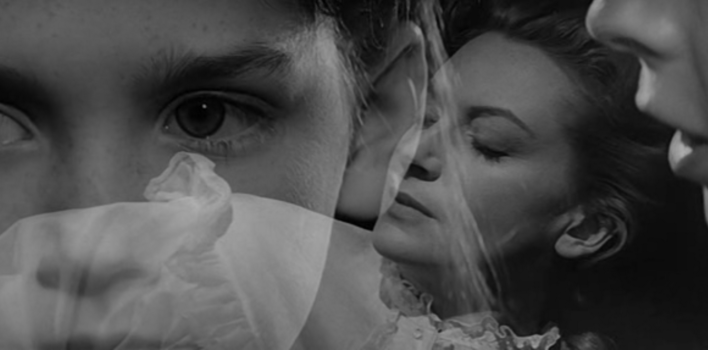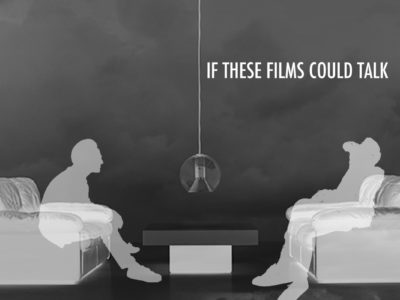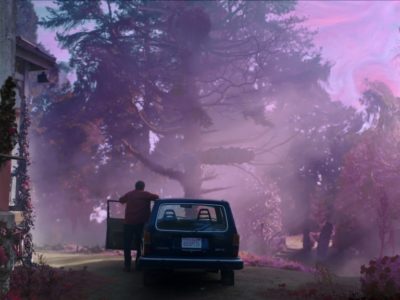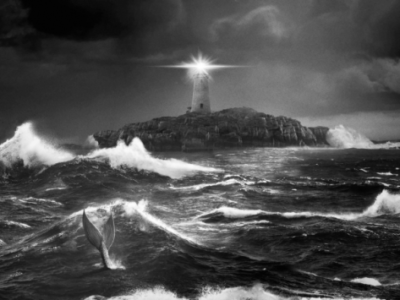Reviewing the Classics | The Innocents (1961) and the Madness of the Past
Henry James’ 1898 novella, “The Turn of the Screw,” is either the greatest ghost story ever written or it is the greatest ghost story without actual ghosts ever written. Critics throughout the years have passionately debated the true nature of the narrative told: are the ghosts real or is the governess going mad? Brad Leithauser sums up the brilliance of James’ story in the New Yorker:
“The Turn of the Screw” provides an unrivalled opportunity to read in a bifurcated fashion, to operate paragraph by paragraph on two levels. Logically, the effect of this ought to be expansive. James is trafficking in openness; readers can shift, at whim, from ghostly tale to character study.
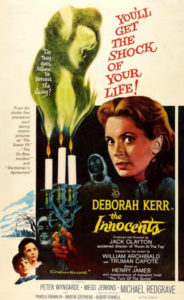 It is to the credit of Jack Clayton that his cinematic adaptation of James’ novella, The Innocents, was able to maintain James’ built in “bifurcated” ambiguity. The nearly inevitable temptation in translating words to a visual medium is showing too much and relying too heavily on exposition. With source material like “The Turn of the Screw,” it would be very easy to come down on one side of the ambiguity or the other. Either way the film would become something altogether different than James’ story. However, The Innocents was able to trade in the same ambiguity because Clayton and his cinematographer, Freddie Francis, never allowed the audience the safety of knowing what was meant to be “real” and what was fever dream within the visual language of the film. Whether it is blurred, ghostly personages across a pond, birds taking flight in slow motion while the glint of the sun obscures the lens or a general haziness laid over various outside shots, the film aims to disorient. The scenes—though shot with a naturalism in their execution—are given a slight distortion just to make us question whether our own perceptions are enough to manifest an accurate account of what is truly happening.
It is to the credit of Jack Clayton that his cinematic adaptation of James’ novella, The Innocents, was able to maintain James’ built in “bifurcated” ambiguity. The nearly inevitable temptation in translating words to a visual medium is showing too much and relying too heavily on exposition. With source material like “The Turn of the Screw,” it would be very easy to come down on one side of the ambiguity or the other. Either way the film would become something altogether different than James’ story. However, The Innocents was able to trade in the same ambiguity because Clayton and his cinematographer, Freddie Francis, never allowed the audience the safety of knowing what was meant to be “real” and what was fever dream within the visual language of the film. Whether it is blurred, ghostly personages across a pond, birds taking flight in slow motion while the glint of the sun obscures the lens or a general haziness laid over various outside shots, the film aims to disorient. The scenes—though shot with a naturalism in their execution—are given a slight distortion just to make us question whether our own perceptions are enough to manifest an accurate account of what is truly happening.
Depending on how one reads the film—whether truly a ghost story or a tale of madness—the dread takes on a different tint. If the ghosts are real and they possess the children and torture the existence of Miss Giddens then we are dealing with a dread of the unknown, something horror notoriously exploits. However, if Miss Giddens is simply going mad then we find ourselves recognizing a different sort of evil that clings to the ghosts of the mind and causes the person to succumb to paranoia and violence. However, what may be more terrifying is if both are true. This means that as viewers our judgment must be suspended. We can’t place the blame on any one person or thing and our need to solve the puzzle is struck down as futile. All we can say is that the whole situation is saturated with a residual evil and brokenness.
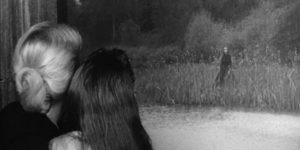 One thing that can be said about the implications of The Innocents is the actions and sins done in the past will not die regardless of whether those who committed them do or not. Whether the ghosts of Miss Jessel and Quint are metaphysically real or not does not shut down the question of how their violent love affair haunts the present existence of Miss Giddens, Miles and Flora. Regardless of how one answers the question of what is real in The Innocents, one thing that can be affirmed is that Miss Jessel and Quint’s lives weigh heavily upon the space and inhabitants of Bly. Quint’s influence infiltrates the innocence of Miles and was potentially the reason for Miles’ expulsion from school. While Miss Jessel’s influence echoes through the youth of Flora as she consistently hums “Oh Willow Waly” throughout the film and through Miss Giddens, someone who relates deeply to Miss Jessel’s love for the children and her growing isolation within the mansion and from society.
One thing that can be said about the implications of The Innocents is the actions and sins done in the past will not die regardless of whether those who committed them do or not. Whether the ghosts of Miss Jessel and Quint are metaphysically real or not does not shut down the question of how their violent love affair haunts the present existence of Miss Giddens, Miles and Flora. Regardless of how one answers the question of what is real in The Innocents, one thing that can be affirmed is that Miss Jessel and Quint’s lives weigh heavily upon the space and inhabitants of Bly. Quint’s influence infiltrates the innocence of Miles and was potentially the reason for Miles’ expulsion from school. While Miss Jessel’s influence echoes through the youth of Flora as she consistently hums “Oh Willow Waly” throughout the film and through Miss Giddens, someone who relates deeply to Miss Jessel’s love for the children and her growing isolation within the mansion and from society.
It is the song that becomes the incarnation of the past’s infectious connection with the present; a harbinger of seething doom that settles like dust upon the bannisters of the estate’s stair railing.
We lay my love and I beneath the weeping willow.
But now alone I lie and weep beside the tree.Singing ‘Oh willow waly’ by the tree that weeps with me.
Singing ‘Oh willow waly’ till my lover return to me.We lay my love and I beneath the weeping willow.
A broken heart have I. Oh willow I die, oh willow I die.
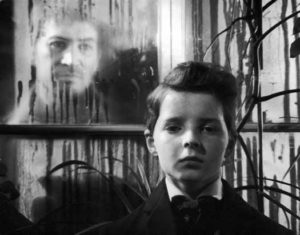 Love that is distorted, lost, unrequited and severed becomes the backdrop to the story’s growing tension and relational destruction. This especially showcases itself within the implied sexual taboos rearing their head in the film—something that is expected with a script written in part by Truman Capote. Miles’ ultra-mature flirtatiousness with Miss Giddens finds its unsettling resolution in a kiss shared and if the brother and sister are truly possessed by the deceased lovers then the implications of that lead to further breakdown of normative sibling relational dynamics and invites further distortions into the everyday life of this increasingly insular “family” unit.
Love that is distorted, lost, unrequited and severed becomes the backdrop to the story’s growing tension and relational destruction. This especially showcases itself within the implied sexual taboos rearing their head in the film—something that is expected with a script written in part by Truman Capote. Miles’ ultra-mature flirtatiousness with Miss Giddens finds its unsettling resolution in a kiss shared and if the brother and sister are truly possessed by the deceased lovers then the implications of that lead to further breakdown of normative sibling relational dynamics and invites further distortions into the everyday life of this increasingly insular “family” unit.
By the last frame, the film finds an intersection between the two bifurcated lines of reading that Leithauser spoke of in the novella. Whether the ghosts are real or Miss Giddens is mad remains unclear—as it should if Clayton is trying to maintain the integrity of the original material—but it is very clear that the past has a way of invading the present. If that past is not dealt with head on and is instead ignored—which seems to be the tact taken by everyone but Miss Giddens—its weight will be more than the future generations can bear. What that crushing weight looks like can take many forms, maybe madness or possibly supernatural visitors and possessions. Either way, a haunting is real and it has a way of demanding our attention whether we choose to acknowledge it or not. The bifurcated readings of the story and film are not mutually exclusive and perhaps the remaining terror of The Innocents, and its source material, is found within the dread of what that ambiguity means for us all in our human narratives.


